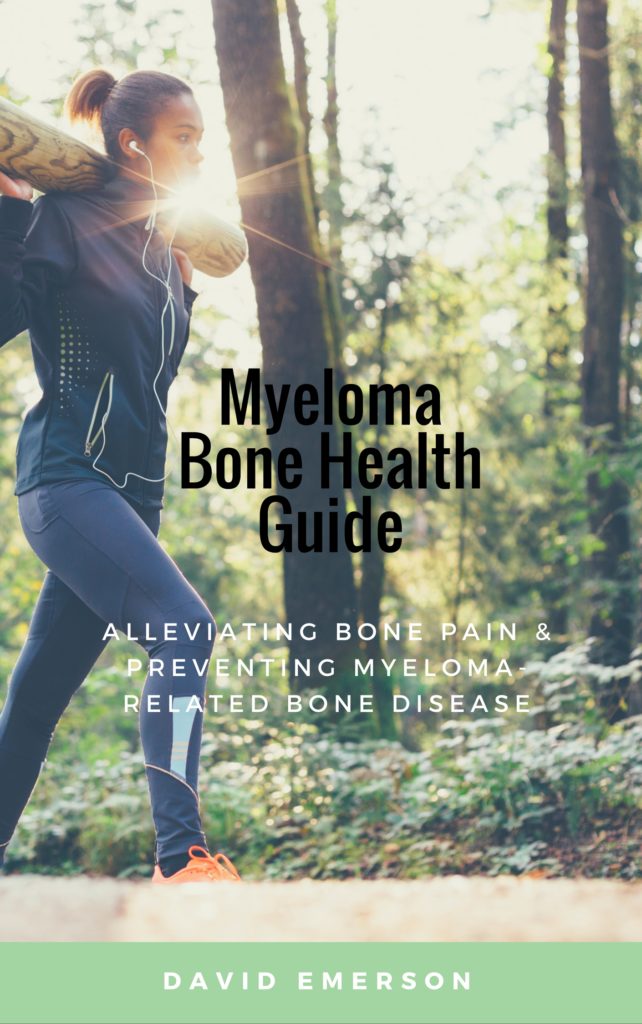Leave a Comment:
2 comments
As I receive pain medication from the v.a. they do not allow use of any CBD based intervention for pain or bone health
Reply
Multiple Myeloma an incurable disease, but I have spent the last 25 years in remission using a blend of conventional oncology and evidence-based nutrition, supplementation, and lifestyle therapies from peer-reviewed studies that your oncologist probably hasn't told you about.
Click the orange button to the right to learn more about what you can start doing today.

Hi David- I’m looking for tips on bone health management without the heavy drugs. I have three compression fractures T 6,7,8 and live with chronic pain. I am interested in the the yoga practice but don’t know what is ok to do with my back. I do take CBD oil for pain which helps somewhat. I take a bone formula called Osteoprime Forte everyday.
Any help would be much appreciated.
I received your information many years ago shortly after I was diagnosed in 2015. Thank you. Carol
“Highlights-
Objective- To determine the effect of different treatment periods (1996–2000, 2001–2006 and 2007–2011) on the risk of fractures in patients with multiple myeloma…
Results- The study population consisted of 925,341 cases, and the same number of matched controls, of whom 1334 patients with multiple myeloma. Among cases, the risk of any fracture was higher in multiple myeloma patients compared to patients without multiple myeloma (any fracture: ORadj[95% CI] 1996–2000: 1.7[1.3–2.3]; 2001–2006: 1.3[1.1–1.6]; 2007–2011: 1.7[1.4–2.2]). Although fractures were mainly non-vertebral, the risk of vertebral fractures in particular was higher in multiple myeloma patients (vertebral fracture: ORadj[95% CI] 1996–2000: 3.5[1.4–8.6]; 2001–2006: 4.0[1.9–8.2]; 2007–2011: 3.0[1.6–5.7]).
Conclusions- Despite new treatment strategies and improved supportive care, this study showed no decreased fracture risk for multiple myeloma patients over time. New treatment strategies, even if they have a positive impact on overall survival, offer no guarantee for a corresponding reduction in bone lesions.”
“Focal or diffuse spinal osteolysis may result in significant morbidity by causing painful progressive vertebral compression fractures (VCFs) and deformities. Advances in the systemic treatment of myeloma have achieved high response rates and prolonged the survival significantly.
Early diagnosis and management of skeletal events contribute to improving the prognosis and quality of life of MM patients. The management of patients with significant pain due to VCFs in the acute phase is not standardised. While some patients are successfully treated conservatively, and pain relief is achieved within a few weeks, a large percentage has disabling pain and morbidity and hence they are considered for surgical intervention.
Balloon kyphoplasty and percutaneous vertebroplasty are minimally invasive procedures which have been shown to relieve pain and restore function. Despite increasing positive evidence for the use of these procedures, the indications, timing, efficacy, safety and their role in the treatment algorithm of myeloma spinal disease are yet to be elucidated…”
“There is a steadily growing body of evidence suggesting that the skeletal endocannabinoid system plays an important role in the regulation of bone mass in health and in disease. Cell and tissue based studies showed that bone cells express cannabinoid receptors and the machinery for the synthesis and breakdown of endocannabinoids, thereby indicating that endocannabinoids influence bone remodelling acting on CB1 and CB2 receptors expressed on bone cells. Expression of CB1 within innervating neurones however raises the possibility that cannabinoids regulate bone mass by a neuronal mechanism…”
As I receive pain medication from the v.a. they do not allow use of any CBD based intervention for pain or bone health
Reply